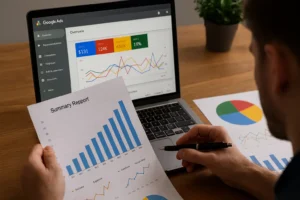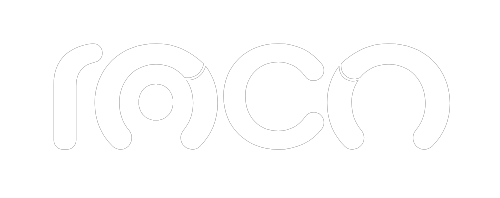In the competitive world of SEO, understanding what link building is and how to apply it correctly makes the difference between a sustainable strategy and one that can lead to penalties.
White-hat link building is much more than just link building: it's a methodical process based on relationships, valuable content, and credibility.
In this article, you'll learn what link building is, why it's essential for SEO, how to structure an ethical strategy step by step, and which tactics work best in real-world settings.
What is link building and why is it essential for SEO?
Link building involves obtaining hyperlinks from other websites to yours. These links act as votes of confidence that improve your authority, visibility, and search engine ranking.
However, not all links are good. White-hat techniques focus on earning legitimate and contextual links, avoiding any manipulative tactics that could lead to penalties. Simply put, understanding link building means understanding how digital reputation is built: through useful content, strategic relationships, and editorial credibility.
If you want to better understand what link building is and how to apply it correctly, don't miss this short explanatory video: “What is Link Building?”
White-Hat Strategies for Building Quality Links
1. Digital PR: relationships that generate authority
Digital PR is one of the most powerful tactics in white-hat link building. It combines public relations and SEO to get editorial mentions and backlinks from trusted media.
How to apply it correctly:
- Publish original and newsworthy content: unique studies, surveys or guides in the sector.
- Build relationships with journalists and bloggers: collaborate with relevant media in your industry.
- Send well-structured press releases: with clear data, downloadable resources and informative value.
When media outlets trust your content, you don't just get links—you strengthen your brand and digital reputation.
2. Prospecting: Identify the best opportunities
A key part of the link building process is prospecting, or the strategic search for websites that could link to your content.
Steps for effective prospecting:
- Analyze your competitors: identify from which domains you receive your most valuable links.
- Use professional tools: like Ahrefs, SEMrush or Moz to discover new opportunities.
- Evaluate each site: check its authority, organic traffic, thematic relevance and update frequency.
The secret isn't in contacting hundreds of sites, but in choosing the right ones, those whose content genuinely relates to yours.
3. Linkable assets: content that attracts natural links
Linkable assets are resources created to be linked to naturally by other websites.
These can be guides, infographics, calculators, case studies, or any other content with high informative value.
Good practices for creating them:
- Provides utility: that solves a real user problem.
- Make it visual and shareable: use charts, graphs, and data visualizations.
- Ensures lasting relevance: Bet on “evergreen” content that doesn’t lose value over time.
How to integrate link building into your digital strategy
Link building shouldn't be a stand-alone tactic. To work, it must be integrated into your digital marketing strategy, especially on-page SEO and visibility campaigns.
On-Page SEO + Link Building = Winning Combination
Before investing in link building, make sure your site is ready to receive them.
Check:
- Loading speed and mobile optimization.
- Coherent internal link structure.
- Pages with content optimized for the right keywords.
A technically and editorially sound site boosts the impact of every backlink earned. Want to improve your SEO and attract more customers? At Agencia Roco We help you transform the digital visibility of your business.
Synergy with Google Ads campaigns
Although the ads do not directly influence the positioning Organic, they can amplify the visibility of your linkable assets. For example, if you promote a useful guide or tool through Google Ads, you increase the chances that other sites will discover and link to it.
How to measure the effectiveness of link building
It's not just about getting links, but about evaluating their real impact on your SEO strategy.
Key metrics:
- Referring domains: quantity and quality of the domains that link to you.
- Domain Authority (DA/DR): trust level of the source pages.
- Referral traffic: visits generated directly from the links.
- Organic positions: evolution of your main keywords.
At Agencia Roco, we use advanced metrics and constant monitoring to ensure that every link contributes to your sustainable growth.
Link building in Colombia and Latin America
In the Latin American context, strategies must be adapted to the local language, culture, and media.
Key recommendations:
- Use neutral Spanish, avoiding excessive technicalities or localisms.
- Build relationships with regional media: specialized blogs, business chambers, business portals.
- Collaborate with local brands or agencies: Co-marketing is a great source of natural links.
Understanding link building in Latin America also means understanding the value of community and local relevance.
Common mistakes to avoid
- Buying links from low-quality sites or private networks (PBNs).
- Repeating the same anchor text (“which is link building”) excessively.
- Ignore toxic links or don't check your backlink profile.
- Neglecting the technical optimization of your site before scaling campaigns.
Understanding what link building is is the first step
Knowing what link building is isn't just about getting links, but about building authority and reputation through transparent and sustainable strategies. An effective campaign combines valuable content, real relationships, and verifiable metrics.
If you want to improve your domain authority and develop a solid white-hat strategy, we invite you to request an SEO audit or learn more about our Web Positioning service.





